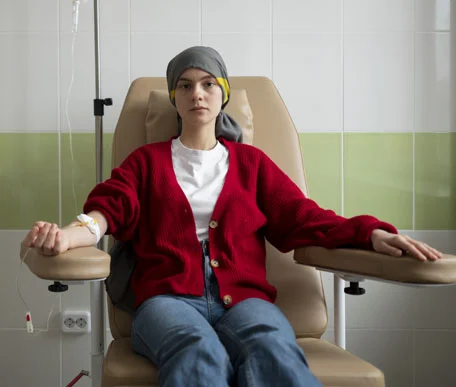


Intrathecal chemotherapy is a medical procedure used to deliver chemotherapy drugs directly into the cerebrospinal fluid (CSF) that surrounds the brain and spinal cord. This approach allows for targeted treatment of cancers that involve the central nervous system (CNS), such as leukemia, lymphoma, and certain types of brain tumors.
Treatment Procedure:
1. Preparation: Before intrathecal chemotherapy, the patient undergoes a thorough evaluation, including medical history review, physical examination, and possibly imaging studies such as magnetic resonance imaging (MRI) or computed tomography (CT) scans to assess the extent of CNS involvement and determine the need for treatment.
2. Drug Selection: Chemotherapy drugs used for intrathecal administration are typically selected based on their ability to penetrate the blood-brain barrier and reach the CNS effectively. Common drugs used in intrathecal chemotherapy include methotrexate, cytarabine, and hydrocortisone, among others.
3. Administration: Intrathecal chemotherapy is administered via lumbar puncture (spinal tap) or through an implanted device called an Ommaya reservoir, which is placed under the scalp and connected to a catheter that delivers the drugs directly into the CSF.
- Lumbar Puncture: During a lumbar puncture procedure, the patient is positioned lying on their side, and a small needle is inserted into the lower back (lumbar region) between the vertebrae. CSF is withdrawn, and chemotherapy drugs are injected into the CSF space.
- Ommaya Reservoir: An Ommaya reservoir is a small, dome-shaped device implanted under the scalp during a surgical procedure. A catheter connected to the reservoir is placed into the CSF space, allowing for repeated administration of chemotherapy drugs without the need for repeated lumbar punctures.
4. Monitoring: Following intrathecal chemotherapy administration, the patient is monitored closely for any immediate complications, such as headache, nausea, vomiting, fever, or signs of allergic reaction.
5. Recovery and Follow-up: After the procedure, the patient may require observation for a period of time to ensure that there are no immediate complications. Depending on the specific treatment regimen, patients may require multiple rounds of intrathecal chemotherapy over a period of weeks or months. Regular follow-up visits with healthcare providers are necessary to monitor treatment response, assess for any adverse effects, and adjust the treatment plan as needed.
Symptoms:
The symptoms associated with intrathecal chemotherapy can vary depending on factors such as the specific chemotherapy drugs used, the underlying condition being treated, and individual patient factors. Common symptoms may include:
- Headache
- Nausea and vomiting
- Fever or chills
- Fatigue
- Muscle aches or weakness
- Allergic reactions (such as rash, itching, or difficulty breathing)
- Neurological symptoms (such as changes in mental status, weakness, or sensory changes) may occur in some cases, particularly if the CNS is involved.
It's important for patients undergoing intrathecal chemotherapy to receive comprehensive monitoring and supportive care from a healthcare team experienced in performing these procedures to minimize the risk of complications and optimize treatment outcomes. Close observation and prompt intervention are essential to ensure the safety and well-being of patients undergoing intrathecal chemotherapy.